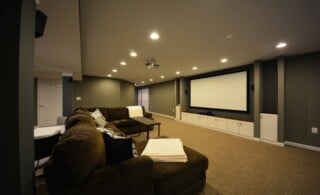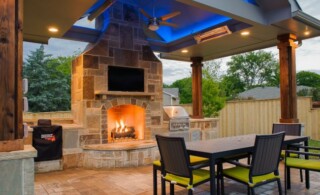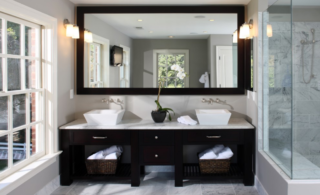
Remodeling a single room of a house can be painful enough, but when you buy a fixer-upper home, whether for your personal residence or as an investment, it’s easy to become overwhelmed. You need to have a plan and, then, just like anything else, take it one step at a time. The plan you create needs to be one that will work for you and will differ greatly depending on whether or not you’re living in your fixer-upper.
Not Living in Your Fixer-Upper
Obviously, the process of a general home remodel is significantly easier when you’re not occupying the house, but there are still some guidelines that may make things easier. Tearing down the walls or “gutting” the house should be the first thing you do. This will give you access to the wiring, insulation, and windows. If you know all three are in good condition, you may forego this step, but more often you’ll want to work from scratch. Replace and possibly upgrade the wiring. The insulation should go in as thick as possible and don’t forget to insulate around the windows. Since you already have the walls down, now is also the best time to replace those windows. Finally, think about the flooring and whether you want to change or replace the material. Once you have these basic renovations done, you can finish the house however you wish without worrying about disturbing anyone’s life.
Living in Your Fixer-Upper
When you or someone else is living in the house a more extensive plan needs to be devised. Some people like to work and finish jobs quickly. They will rip out the floor, pull out the trim, and choose a color scheme all at the same time. If this is you, go for it. But you probably want to be the only one living in the house, as it’s unlikely anyone is going to be on-board with you. Most people like to compartmentalize their remodeling efforts, focusing on one room at a time. When you’re planning on living in the house, it’s probably best to remodel the bedroom where you’ll be staying first. Getting a good night’s rest will help make everything easier. Next, focus on the bathroom and kitchen, as they tend to be the most important rooms to get up and functional—but be careful not to rush things too much, they’re also the rooms that have the most direct effect on the home’s value. Remember to think ahead and be prepared to finish a room once you start it.
Ready to start your Fixer Upper Project?
Find ProsThe Best of Both Worlds
You might want to consider finding a friend or cheap hotel to stay in during the beginning part of the remodeling process, especially if you can find a place close to the home. This will allow you to remodel your bedroom, the bathroom, and the kitchen without worrying about these rooms being out of commission. The process will likely go faster and easier this way. Once you’ve completed these rooms you can move in and go at your own pace.
The Fixer-Upper Story
It’s a common tale. You have the idea to buy a fixer-upper. You feel good about it and decided to do it. For the next few weeks or few months you can’t imagine what you were thinking. But you have no choice and you finish the job and, years later, it turns out to be one of the best decisions you’ve made. If nothing else, keep this in mind: Fixer-uppers tend to be good investments, even if you find you can’t do all the repairs yourself. Hiring a contractor for some or even all the work is not admitting defeat. The home equity you stand to gain will often more than cover for the repairs and will allow you to keep your sanity during the remodeling process.
 Your Bat Cave: Finished Basements
Your Bat Cave: Finished Basements  How Do I Create an Outdoor Living Area?
How Do I Create an Outdoor Living Area?  What to Consider When Adding a Food Pantry
What to Consider When Adding a Food Pantry  Remodeling Ranch Homes – Ideas & Options
Remodeling Ranch Homes – Ideas & Options  Preparing for a Bathroom Remodel
Preparing for a Bathroom Remodel 

Are You Familiar With This Topic? Share Your Experience.